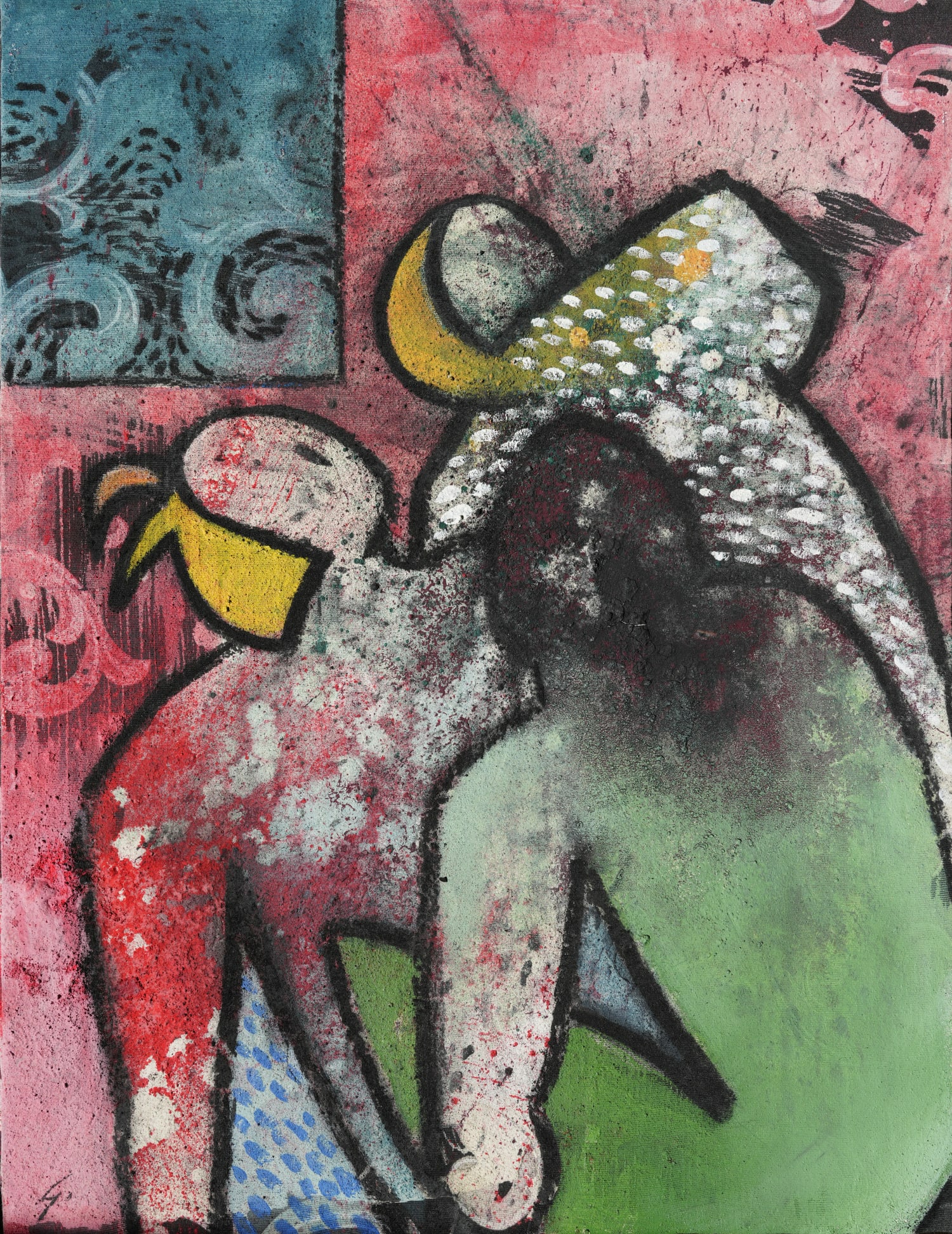Cristobal Gabarron
An internationally-recognized artist known for his production of public art, as much in paint as in sculpture or monumental montage. His installations in parks, streets, and squares have contributed to redefining the essence of cities and communities all over the world.
Born on April 25, 1945 in the town of Mula, (Murcia) Spain, Gabarron's first educational experience in art was in Valladolid. Following that period of study, he continued his career in France, Italy and the United States. Gabarron's work is focused on his interest in humanism, people who live in harmony with their natural surroundings, their peaceful coexistence, and the development of human values. During his career, which accounts for over 50 years of experience, Gabarron has collaborated with public and private organizations from around the world to create noteworthy works of art for special occasions, for example, the mural for the Barcelona Olympics (1992) and the set of murals for the Universal Exposition of Seville (1992), or the group of sculptures for Atlanta Star (1996). His collaboration with the United Nations has been a constant in his career ever since 1986, when he designed the commemorative stamp for the International Year of Peace based on his work, Our Hope for Peace. This work was followed by Dawn in the new Millennium, which commemorated the UN Millennium Summit (2000), the Millennium Chapel (2001) and most recently Enlightened Universe, which was inaugurated by the secretary general of the United Nations, Ban Ki-moon, on October 24, 2015 in New York City's Central Park to mark the 70th anniversary of the United Nations. Gabarron's collaboration with international organizations, such as the International Olympic Committee or the United Nations, have given rise to a very productive period that endures to this day through the Enlightened Universe exhibition in Rond-point Schuman, Brussels, which is meant to celebrate United Nations Day and the celebration of the 70th Anniversary of the Universal Declaration of Human Rights.
Cities around the world have embraced Gabarron's vision by exhibiting his monumental sculptures. Prominent museums and European, American, and Asian institutions have exhibited Gabarron's works in iconic streets and squares. Additionally, several cities have publicly and permanently incorporated his large outdoor sculptures as part of their cultural heritage. His work has been the subject of analysis in retrospectives, such as those held by the Chelsea Art Museum, IVAM (Valencia Institute of Modern Art), the Gdansk Museum of Modern Art in Poland, or the National Museum of Art of China in Shanghai. In all, critics and historians with the authority of Donald Kuspit, curator and professor at New York University (NYU), or Kosme de Barañano, curator and professor at Universidad Miguel Hernández de Elche, have carried out careful analysis and studies of Gabarron's professional career, which are included in the abundant literature published during the last several years.
In 2016, the city and museums of Cannes dedicated a major retrospective of his sculpture with over 200 works made of various materials representing several periods, as well as the debut of the public and private sculpture called Mille formes à la conquête de l'espace (One thousand forms out to gain space). In 2017, the city of Amsterdam, through the ARTZUID Foundation, showed a selection of 28 monumental works placed in emblematic enclaves throughout the city, like the Museum Plein (Museum Square), between the Stedelijk and Van Gogh museums up to the Gershwin Plain. In late 2018, the Palais des Nations Unies in Geneva held the exhibition The Color of Human Rights, the world premiere of the 30 paintings created by Gabarron in tribute to the 70th Anniversary of the Universal Declaration of Human Rights, which in 2019 travelled to the Kanal Centre Pompidou in Brussels.
In 2020, the city of Valladolid with the support of the Spanish Ministry of Foreign Affairs, the European Union and Co-operation and the United Nations Regional Information Centre in Brussels commemorated the 75th anniversary of the United Nations with a double exhibition of Cristobal Gabarron. One outdoors at Plaza San Pablo, with Enlightened Universe and the other at the Patio Herreriano Museum of Spanish Contemporary Art: Gabarron, humanist of colors. That, curated by Prof. Miguel Ángel Zalama, contained a large number of artworks that retrospectively shown the artist’s direct relationship with the UN developed since 1986.
After the COVID pandemic, 2022 was a fruitful year. Gabarron started AMBIT 5 Continents, a happening + performance + action painting project that promotes a series of artistic meetings from an international perspective, which will take place over four years in geographical enclaves of the five continents, of special historical and artistic interest to Gabarron. Each edition of AMBIT highlights the identity and cultural values of a specific habitat on the planet and in 2022, Gabarron realized 6 editions in Spain, India, Germany, USA, Malta and Egypt.
Also in 2022, the ICCR of India presented Gabarron’s first solo exhibition in India, curated by Dr. Alka Pande, The Head of the Giant at Kalamkaar Gallery, Bikaner House, New Delhi. And in Germany, The Peter Wilmot Thompson Foundation unveiled “Gabarron Pilgrim Museum” curated by Fré Ilgen: Cristobal Gabarron. The Magic Circle: Siega Verde, Tao Sculpture Group & Asymmetries. Bei Wu Sculpture Park Wesenberg. Germany.
In 2023, curator Antón Castro, reviewed his Atlantic artwork, mostly of 21st century, with the exhibition Gabarron Atlantic. Ronsel de Saudade at the Museum of Pontevedra in Galicia.

